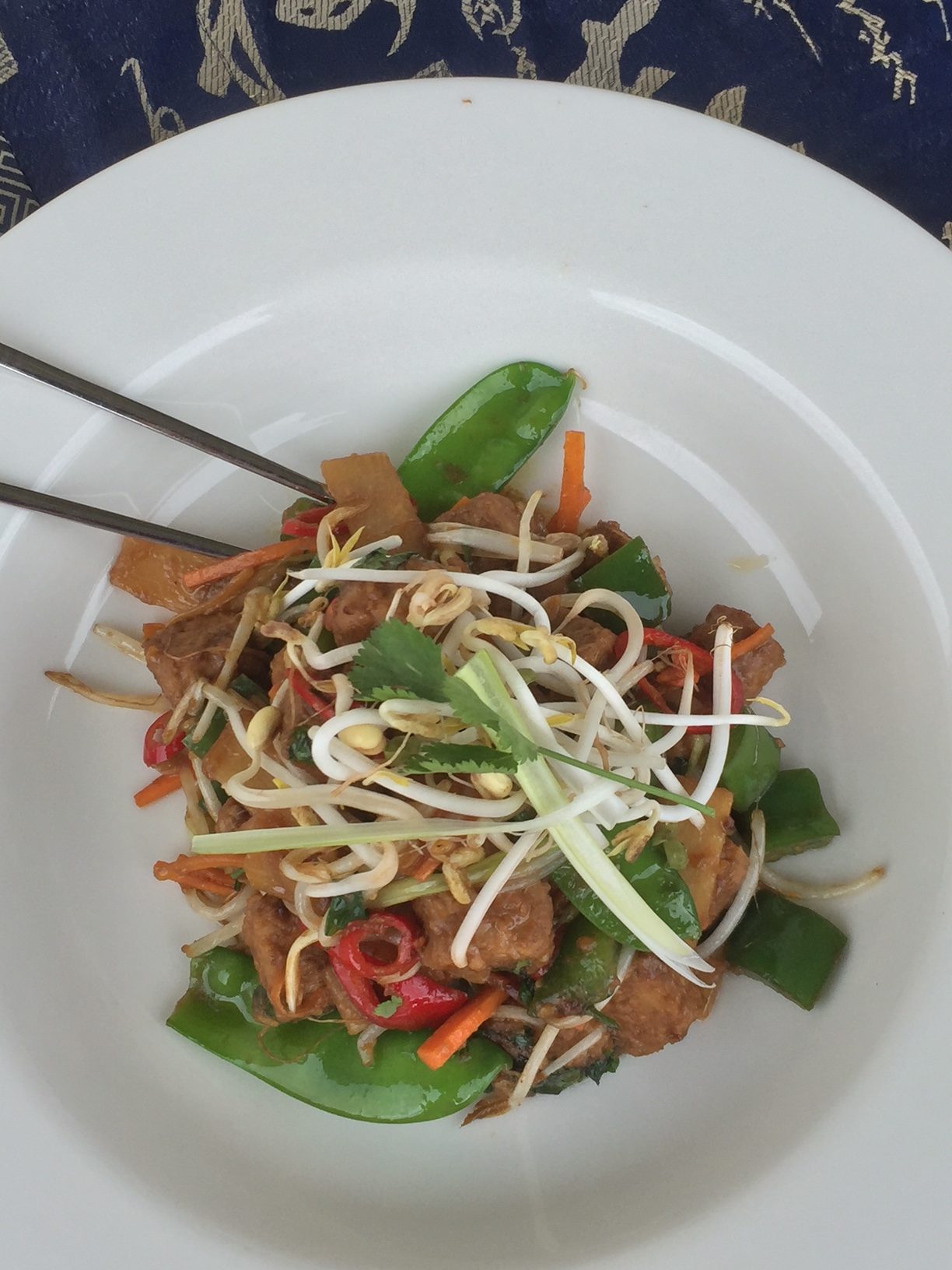I really enjoyed preparing this dish which is my homage to traditional Cantonese cooking. I lived and worked in Hong Kong for several years as a journalist in the 1990s and I enjoyed many regional dishes and even learned a few words of Cantonese!
Cantonese food is traditionally less spicy than other Chinese cuisines, with more focus on simple ingredients like soy sauces, black bean sauces, spring onions, rice wine and sesame oil.
I don’t normally use bamboo shoots but I love the flavour and they are called the “king” of vegetables in China. Renowned for being heart-healthy I found them at the Asian grocer in tins and apart from being good for you they add a nice texture to the stirfry. I also use fresh bean sprouts which are both in the stir fry as well as used as a crunchy garnish. I keep the stirfry light and colourful without too many competing or complex spices as that is traditionally Cantonese. The dreamily nutty aroma of sesame oil always evokes good food memories for me.
Making the tempeh stir fry:
To make tempeh, simmer it in stock for half an hour to allow it to soften and soak up flavour and seasoning before slicing it into cubes for the stirfry.
Make a Cantonese-style stir fry sauce by combining hoisin sauce (1/4 cup), Chinese light soy sauce 1 1/2 tbsp, sesame oil (2 tbsp) with two minced cloves of garlic and about half an inch of grated ginger. I describe this as a Cantonese style sauce as they often use hoisin and simple ingredients like ginger and garlic in their stirfry dishes.
Heat your wok or fry pan and add the coconut oil, then added the tempeh followed soon after by the shallots, the julienned carrot, bamboo shoots, snow peas, diced green pepper, finely cut red chile peppers. Then add the sauce and a handful of fresh coriander.
It doesn’t take long to combine all the ingredients and produce a lovely aromatic stirfry.
For many years in the West, our experience of Chinese cuisine has actually been that of Cantonese regional cuisine (Guangdong) and neighbouring Hong Kong with traditional dishes like sweet and sour pork, crispy noodle Chow Mein, barbecue pork, salt and pepper squid and shrimp. Guangdong is in the south on the South China Sea so the cuisine often features fresh seafood.
Over time, due partly to its exposure to the West, the region adopted Western cooking methods like cooking in salt, cooking or steaming with wine, oven baking and soft frying.

